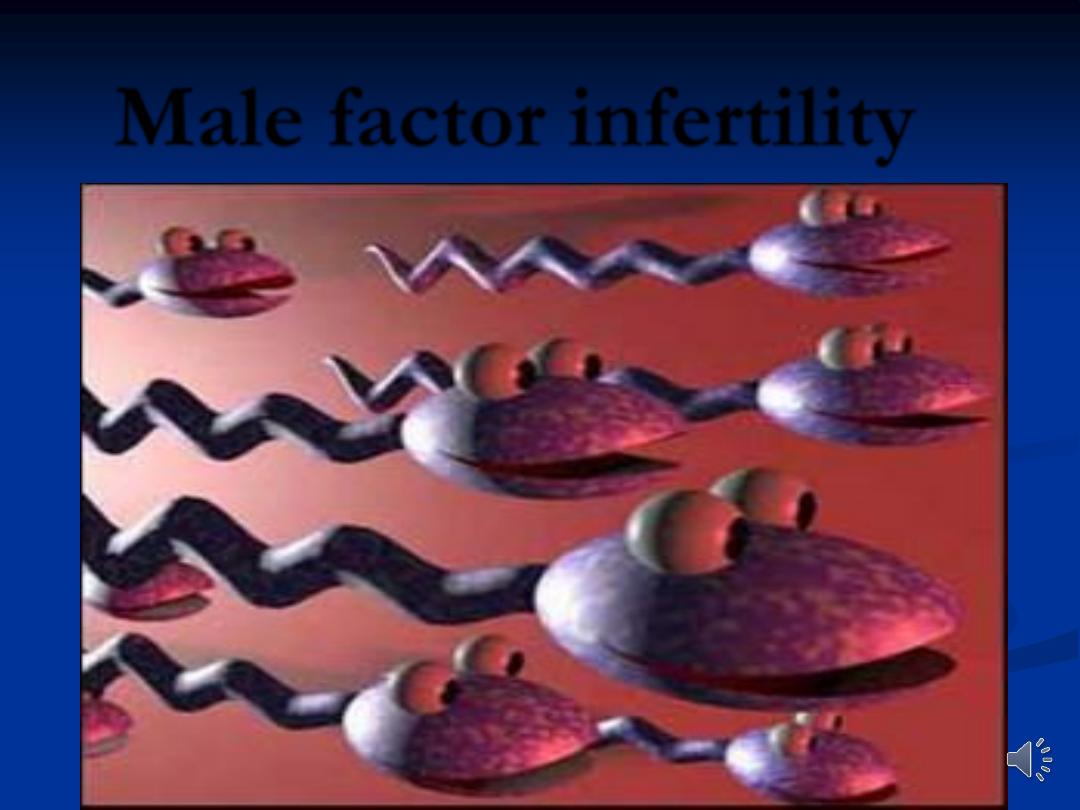
Male factor infertility
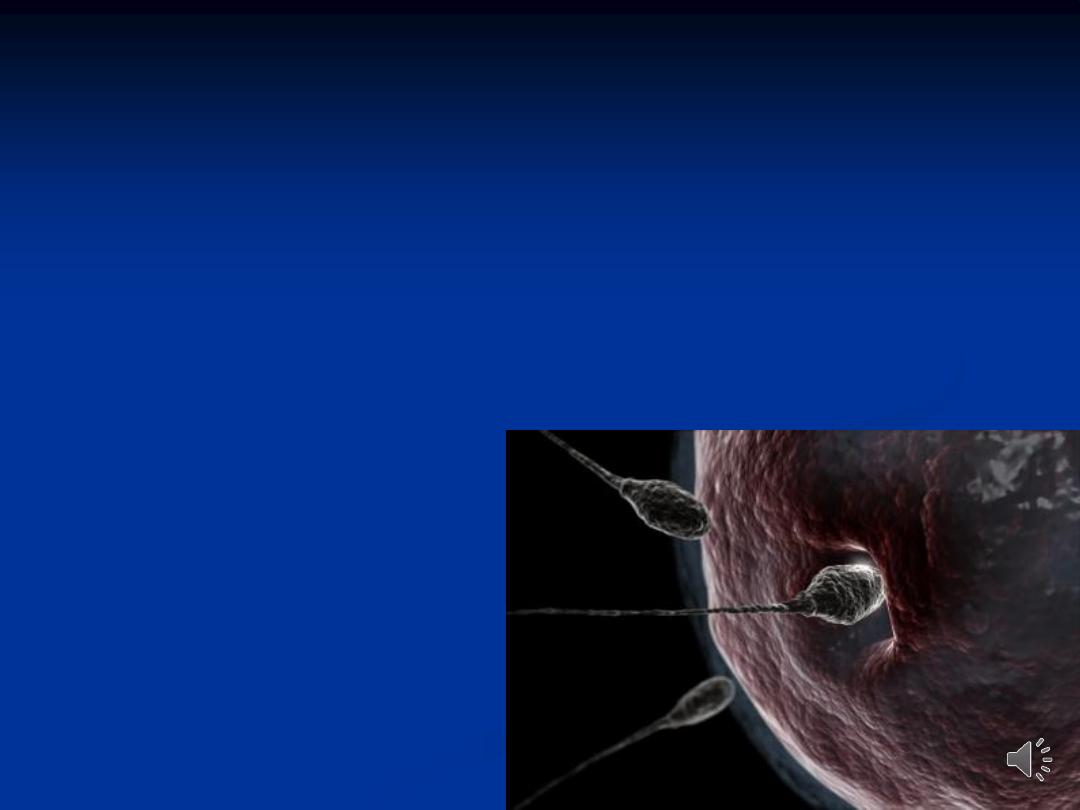
Male factor infertility implies a lack of
sufficient numbers of competent sperms,
resulting in failure to fertilize the normal
ovum.
It is directly responsible for 30% of cases of
infertility

Spermatogenesis requires testicular growth &
differentiation & it is under endocrine control
by FSH & paracrine control by androgens
produced by LH-stimulated Leydig cells.
Spermatogenesis comprises the mitotic division
of spermatogonia & meiotic division of
spermatocytes.
These will develop into spermatids which then
transform into mature spermatozoa in a process
called spermiogenesis.
The process takes 72 days to complete
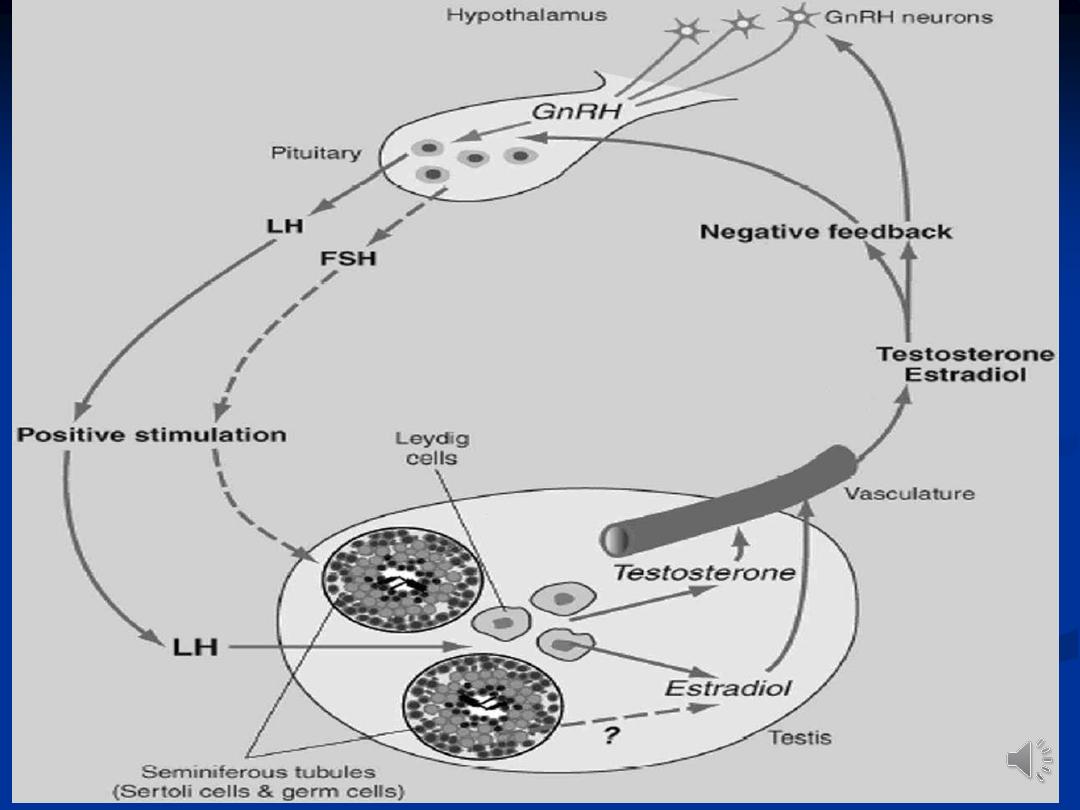
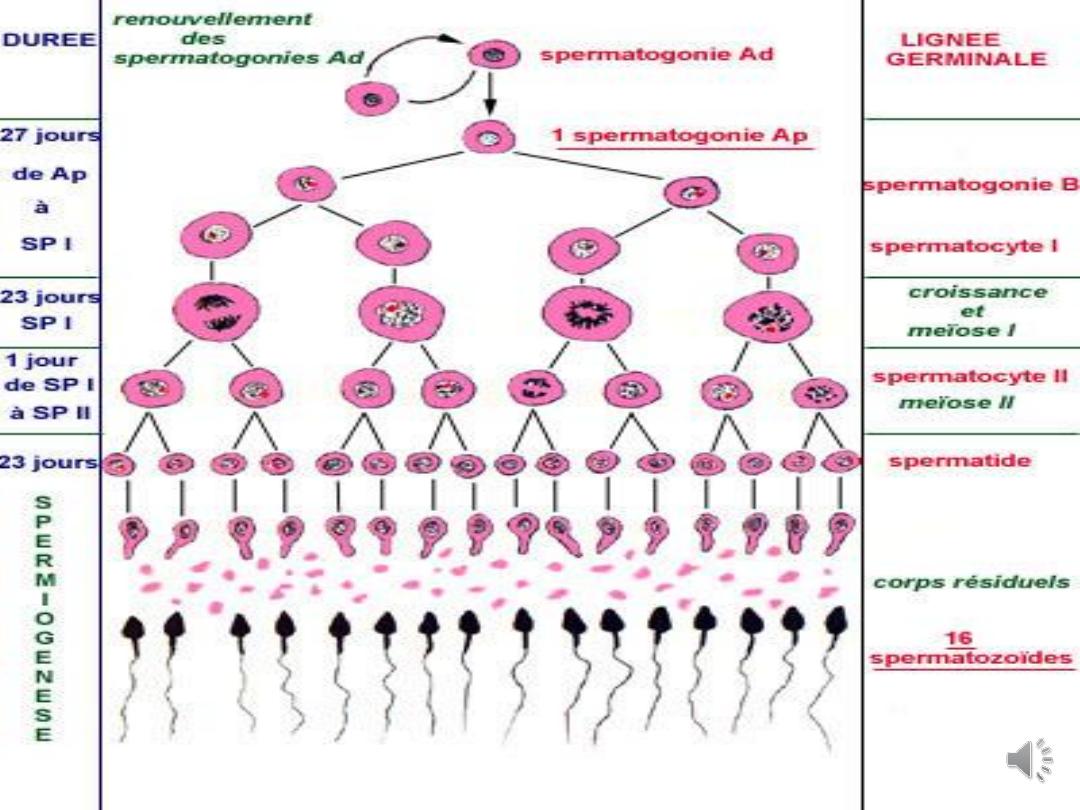
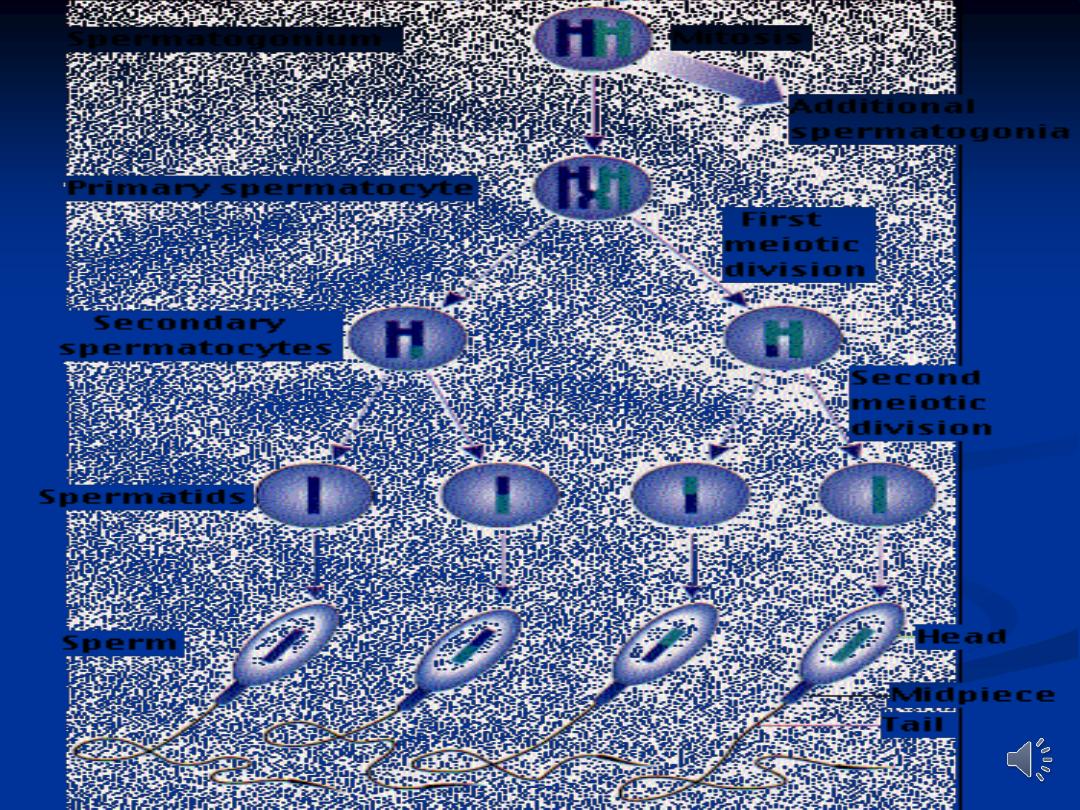
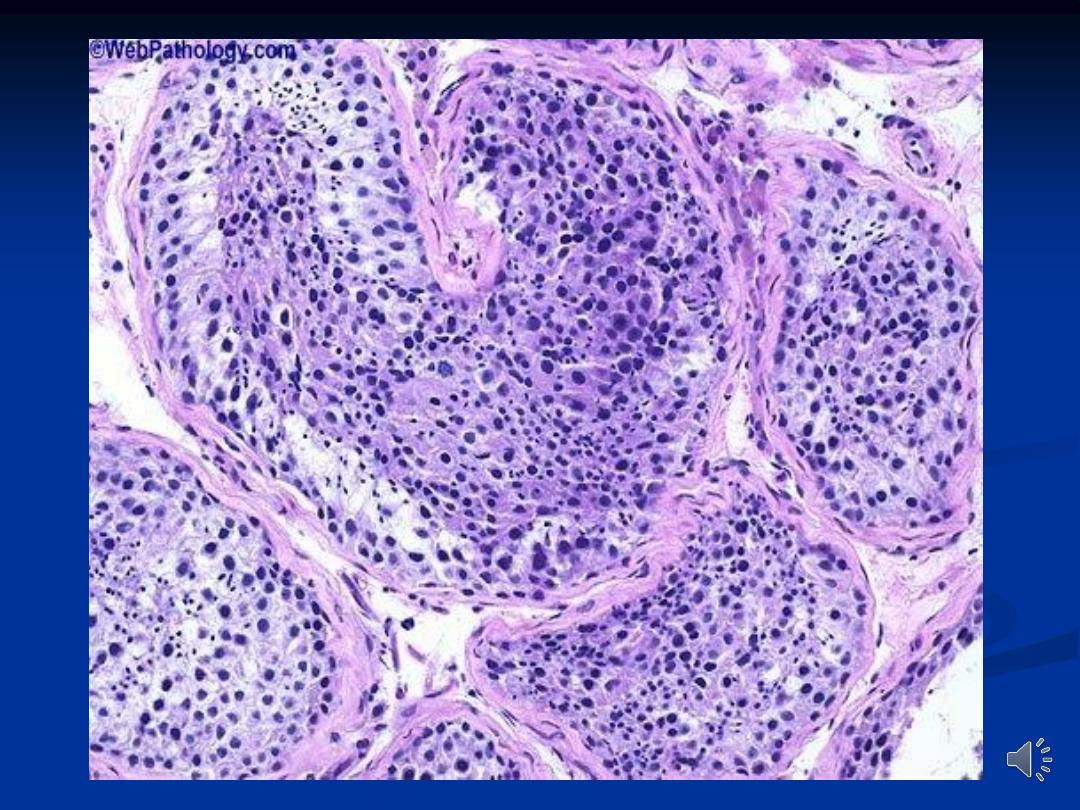
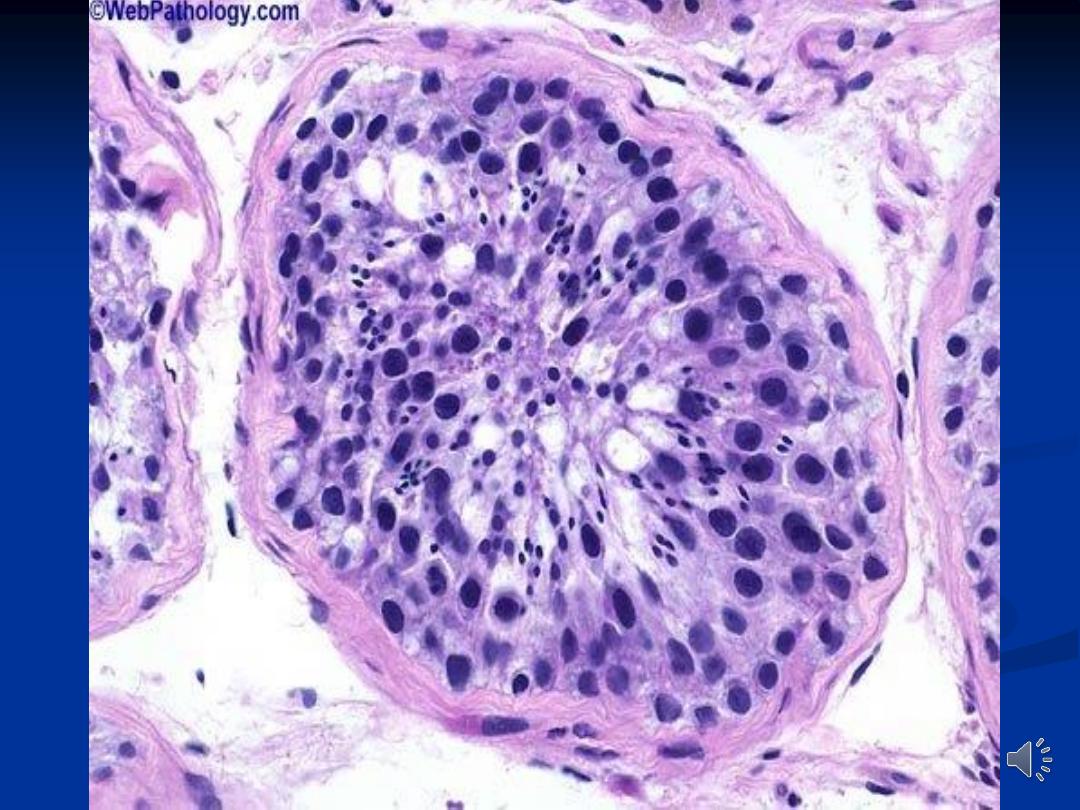
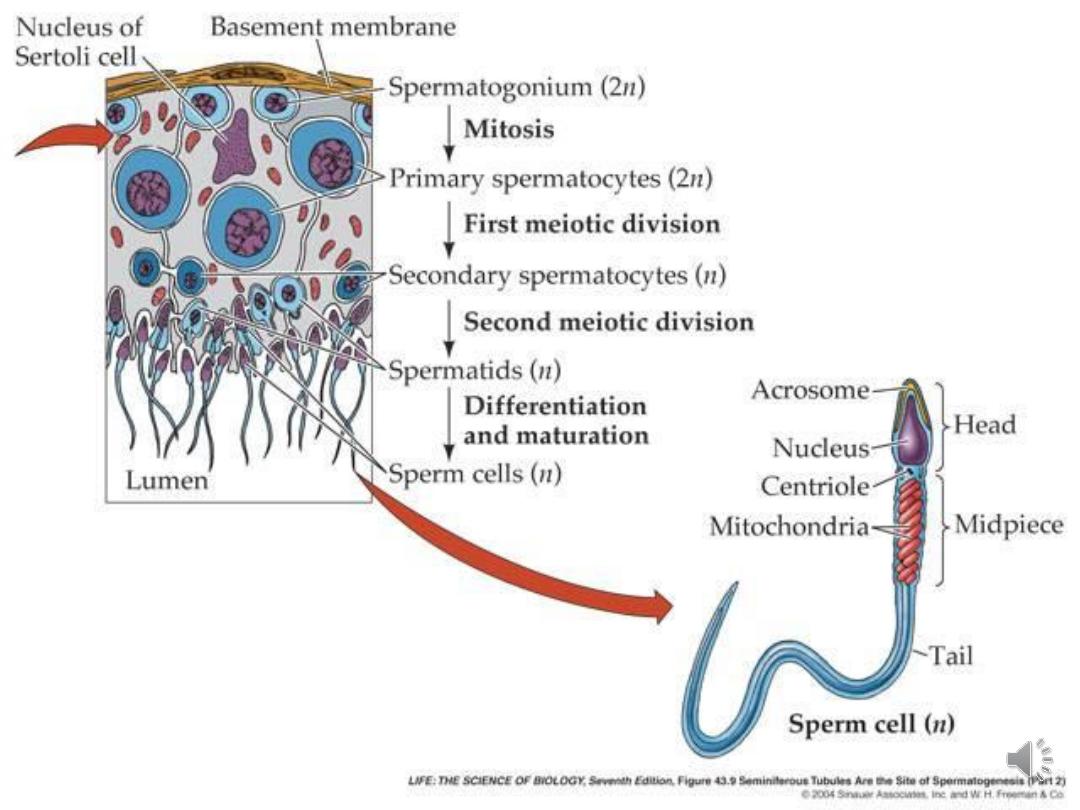
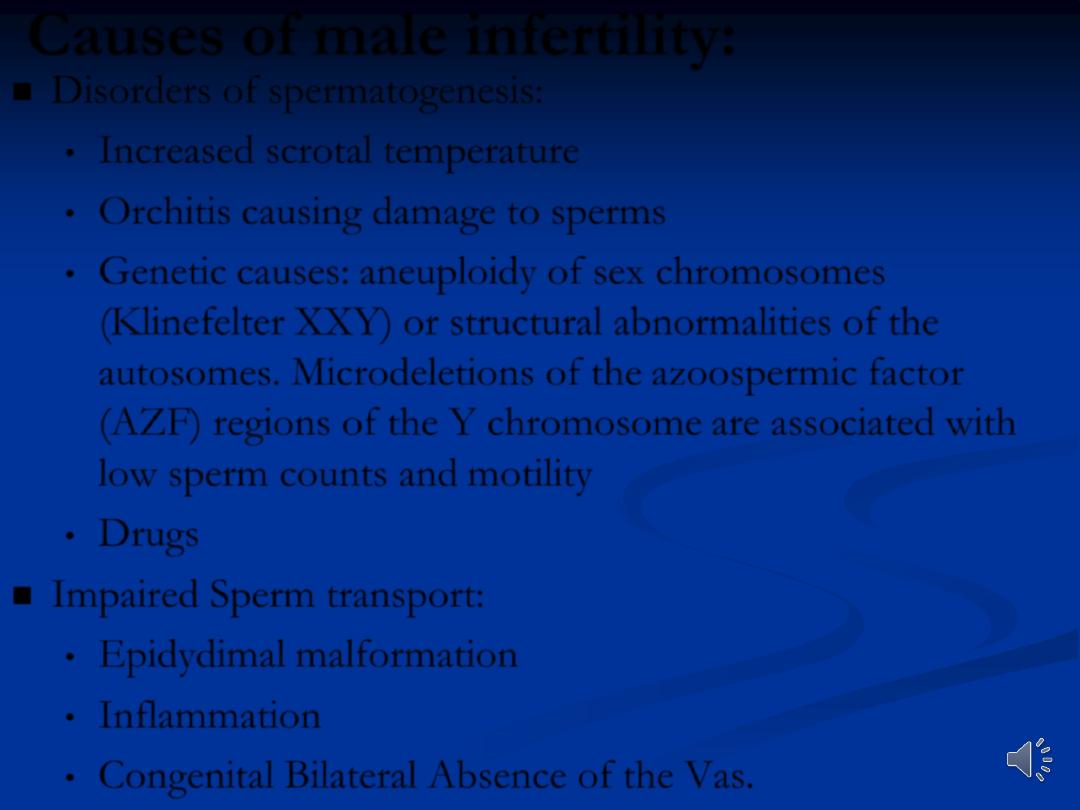
Causes of male infertility:
Disorders of spermatogenesis:
•
Increased scrotal temperature
•
Orchitis causing damage to sperms
•
Genetic causes: aneuploidy of sex chromosomes
(Klinefelter XXY) or structural abnormalities of the
autosomes. Microdeletions of the azoospermic factor
(AZF) regions of the Y chromosome are associated with
low sperm counts and motility
•
Drugs
Impaired Sperm transport:
•
Epidydimal malformation
•
Inflammation
•
Congenital Bilateral Absence of the Vas.
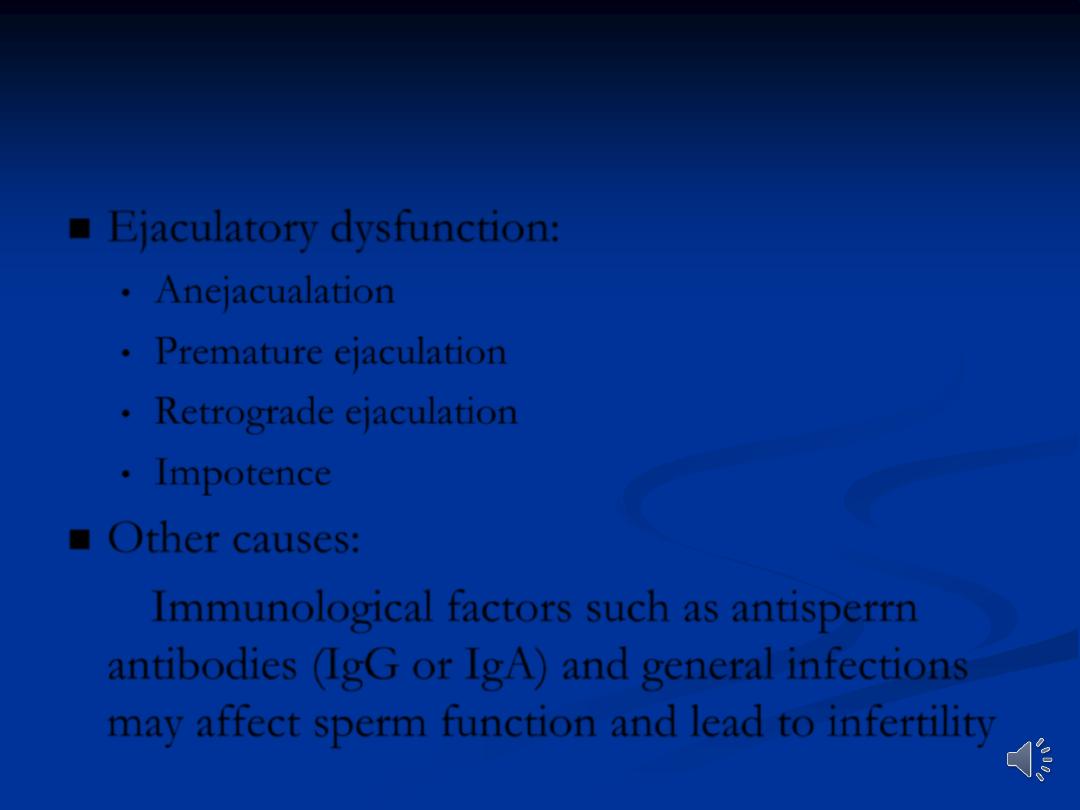
Ejaculatory dysfunction:
•
Anejacualation
•
Premature ejaculation
•
Retrograde ejaculation
•
Impotence
Other causes:
Immunological factors such as antisperrn
antibodies (IgG or IgA) and general infections
may affect sperm function and lead to infertility
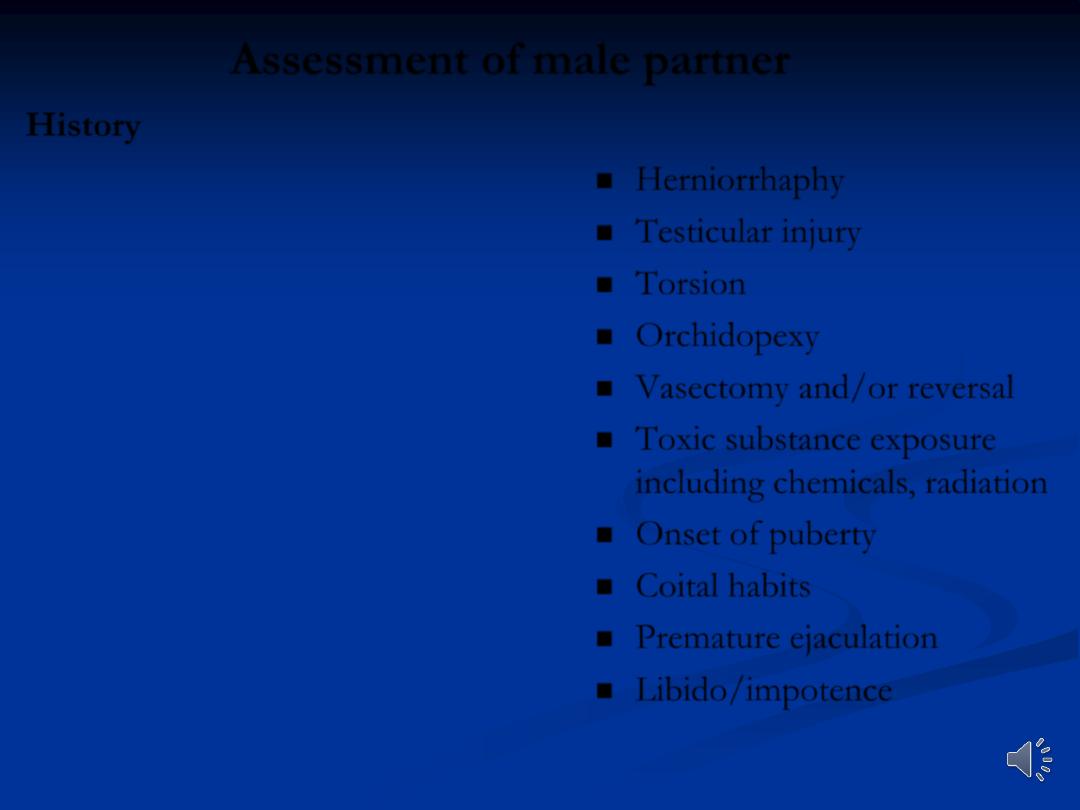
Assessment of male partner
History
Duration of infertility
Fertility in previous relationships
Previous fertility investigations
and treatment
Medical
Sexually transmitted infection
Epididymitis
Mumps orchitis
Testicular maldescent
Chronic disease
Drug/alcohol abuse
Recent febrile illness
Recurrent urinary tract infection
Herniorrhaphy
Testicular injury
Torsion
Orchidopexy
Vasectomy and/or reversal
Toxic substance exposure
including chemicals, radiation
Onset of puberty
Coital habits
Premature ejaculation
Libido/impotence
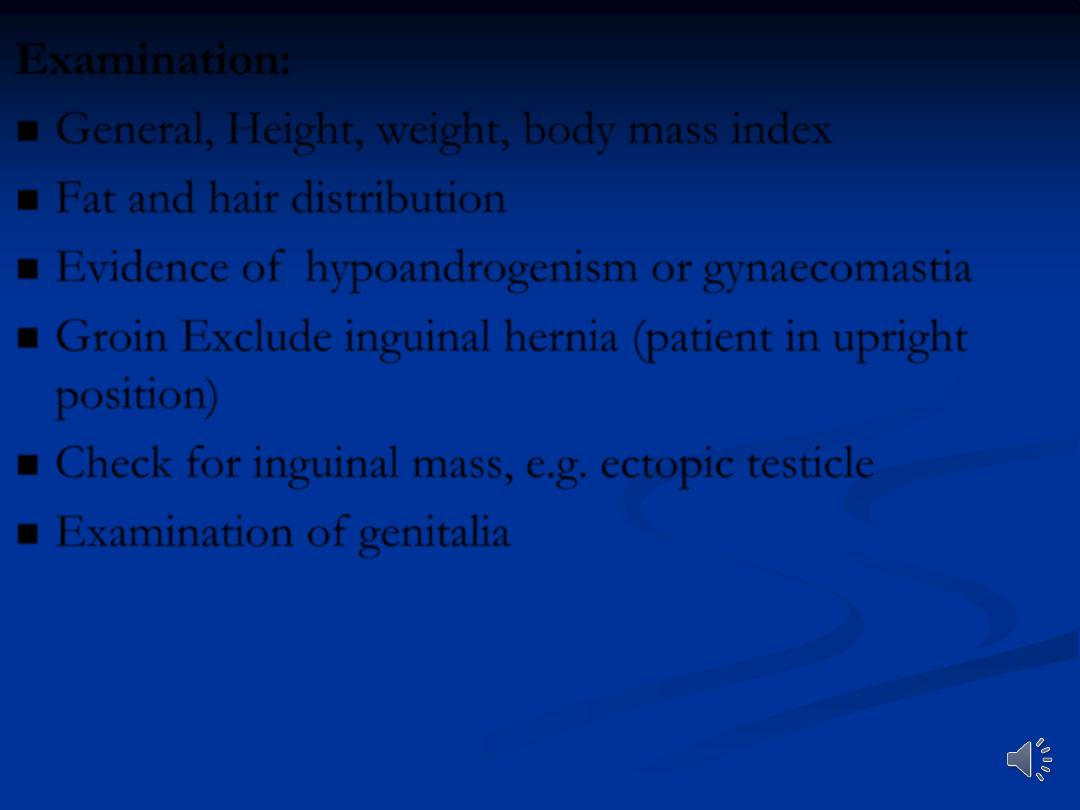
Examination:
General, Height, weight, body mass index
Fat and hair distribution
Evidence of hypoandrogenism or gynaecomastia
Groin Exclude inguinal hernia (patient in upright
position)
Check for inguinal mass, e.g. ectopic testicle
Examination of genitalia
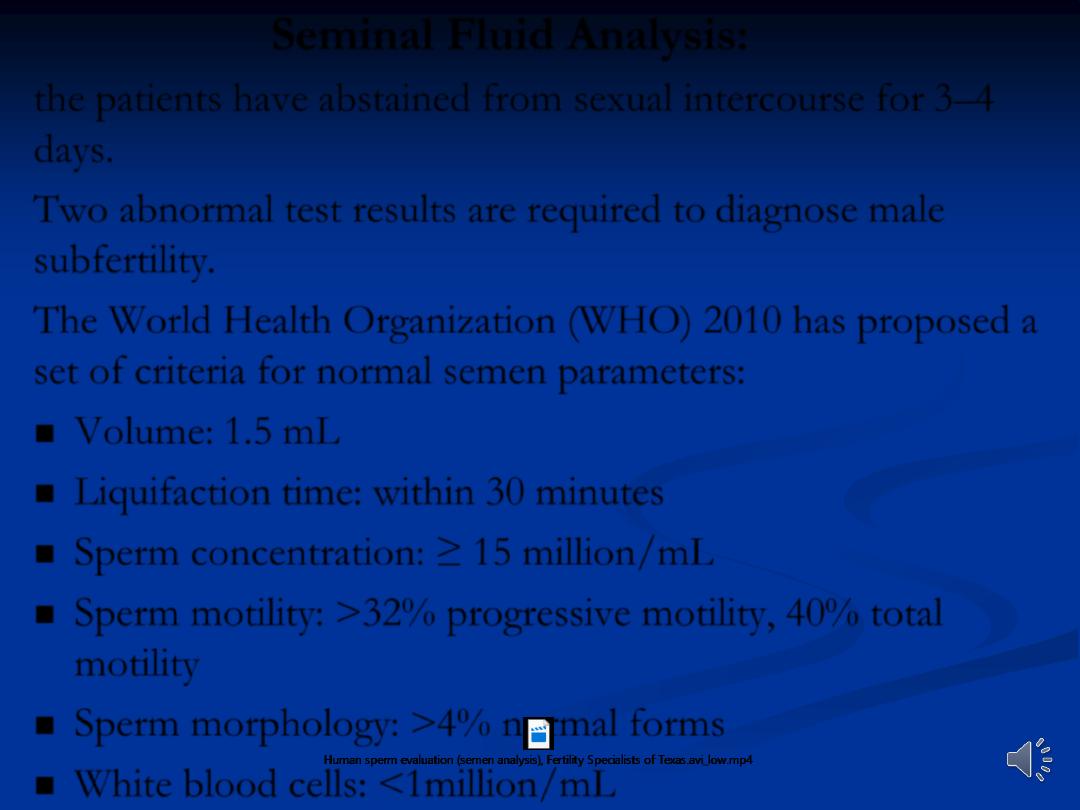
Seminal Fluid Analysis:
the patients have abstained from sexual intercourse for 3–4
days.
Two abnormal test results are required to diagnose male
subfertility.
The World Health Organization (WHO) 2010 has proposed a
set of criteria for normal semen parameters:
Volume: 1.5 mL
Liquifaction time: within 30 minutes
Sperm concentration: ≥ 15 million/mL
Sperm motility: >32% progressive motility, 40% total
motility
Sperm morphology: >4% normal forms
White blood cells: <1million/mL
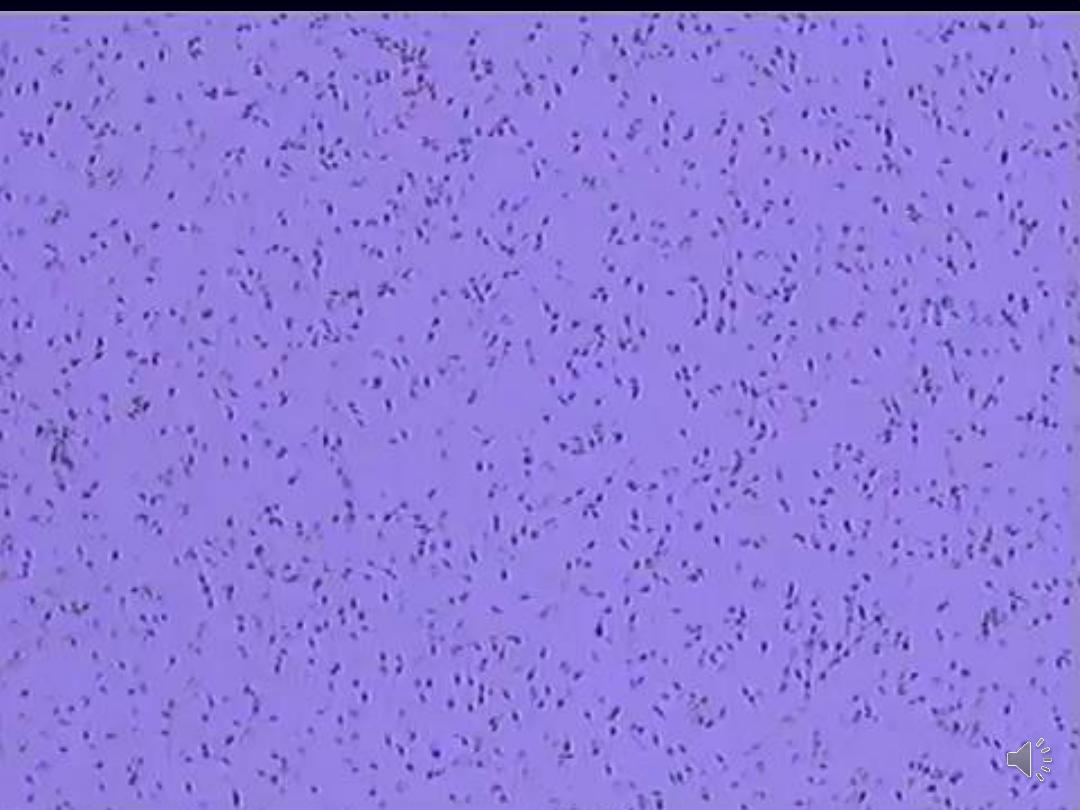
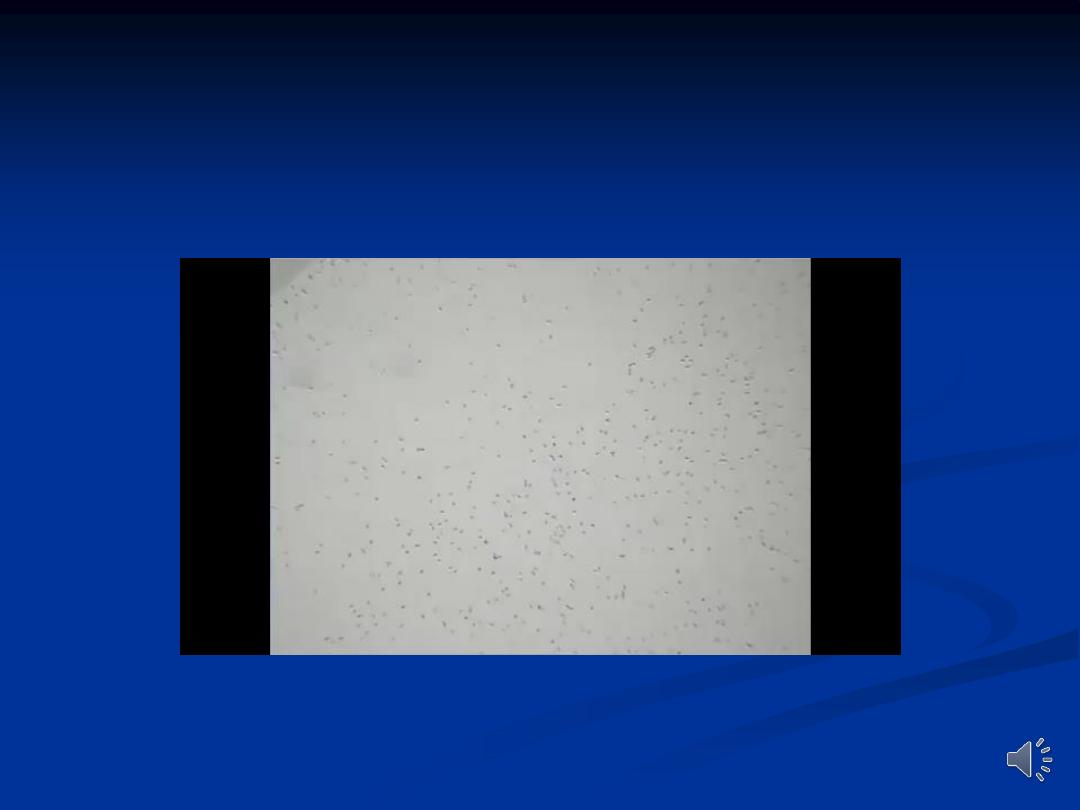
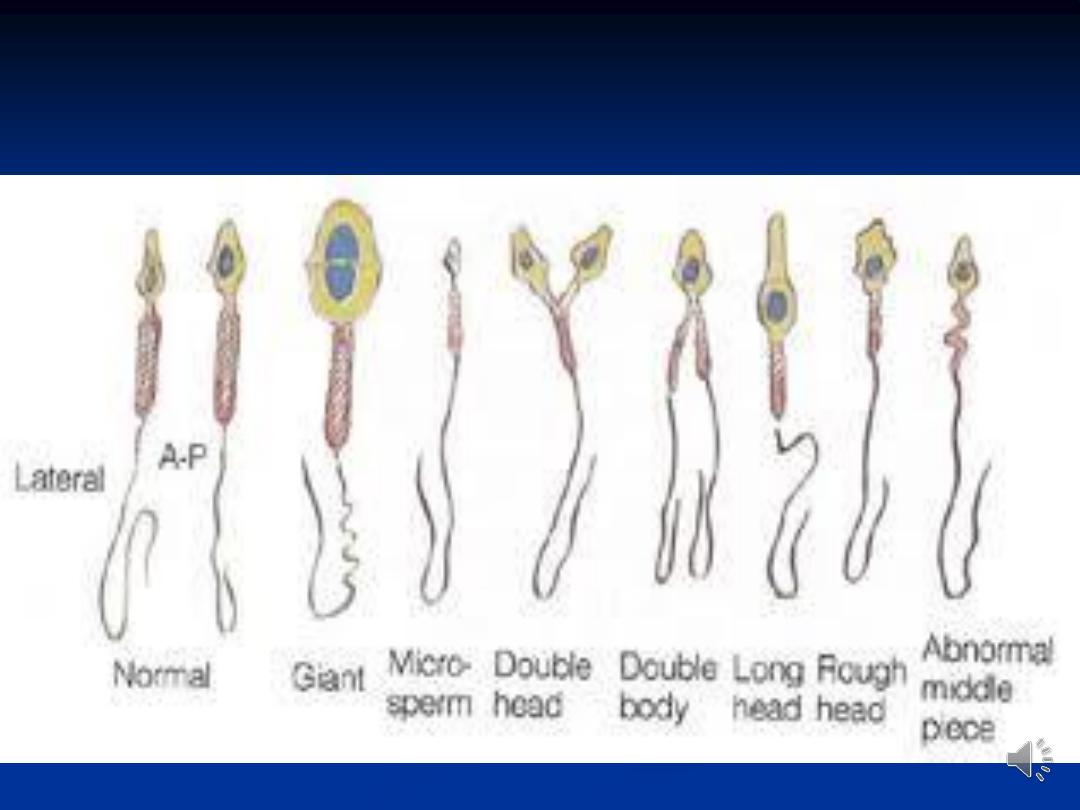
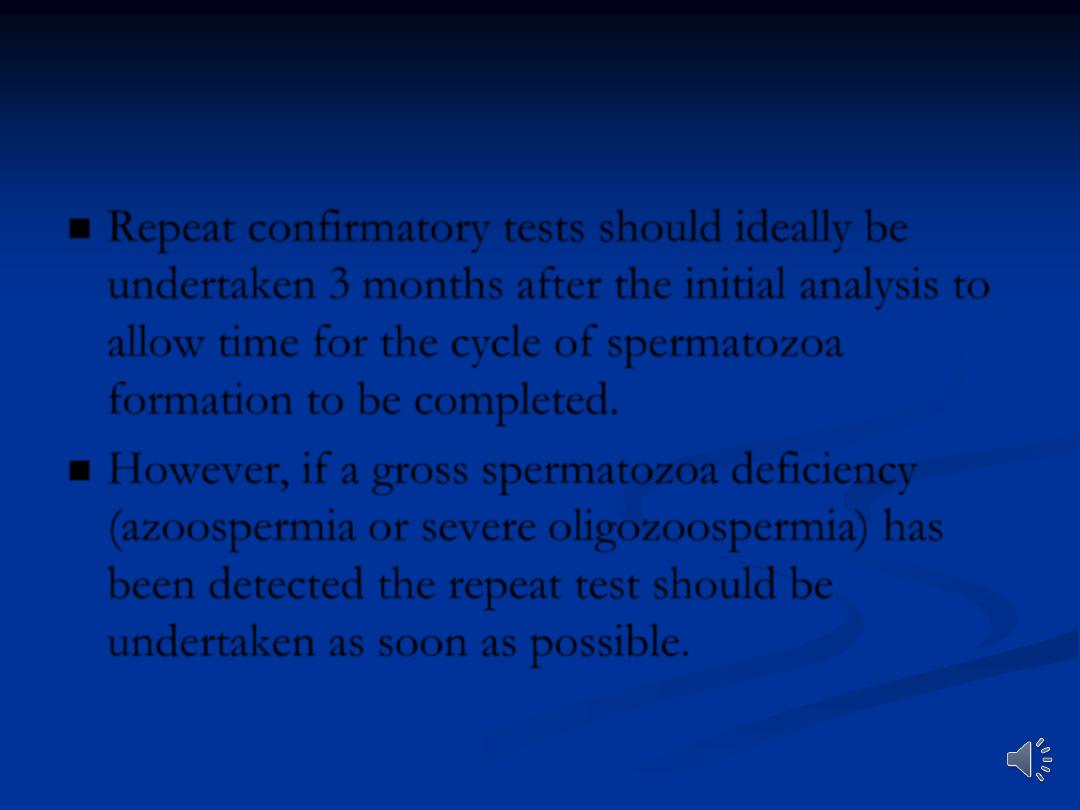
Repeat confirmatory tests should ideally be
undertaken 3 months after the initial analysis to
allow time for the cycle of spermatozoa
formation to be completed.
However, if a gross spermatozoa deficiency
(azoospermia or severe oligozoospermia) has
been detected the repeat test should be
undertaken as soon as possible.

Nomenclature for some semen variables:
Oligozoospermia: Sperm concentration less than
the reference value
Asthenozoospermia: less than the reference
value for motility
Teratozoospermia: less than the reference value
for morphology
Azoospermia: no spermatozoa in the ejaculate:
o
Obstructive
o
Non- obstructive
Aspermia: no ejaculate
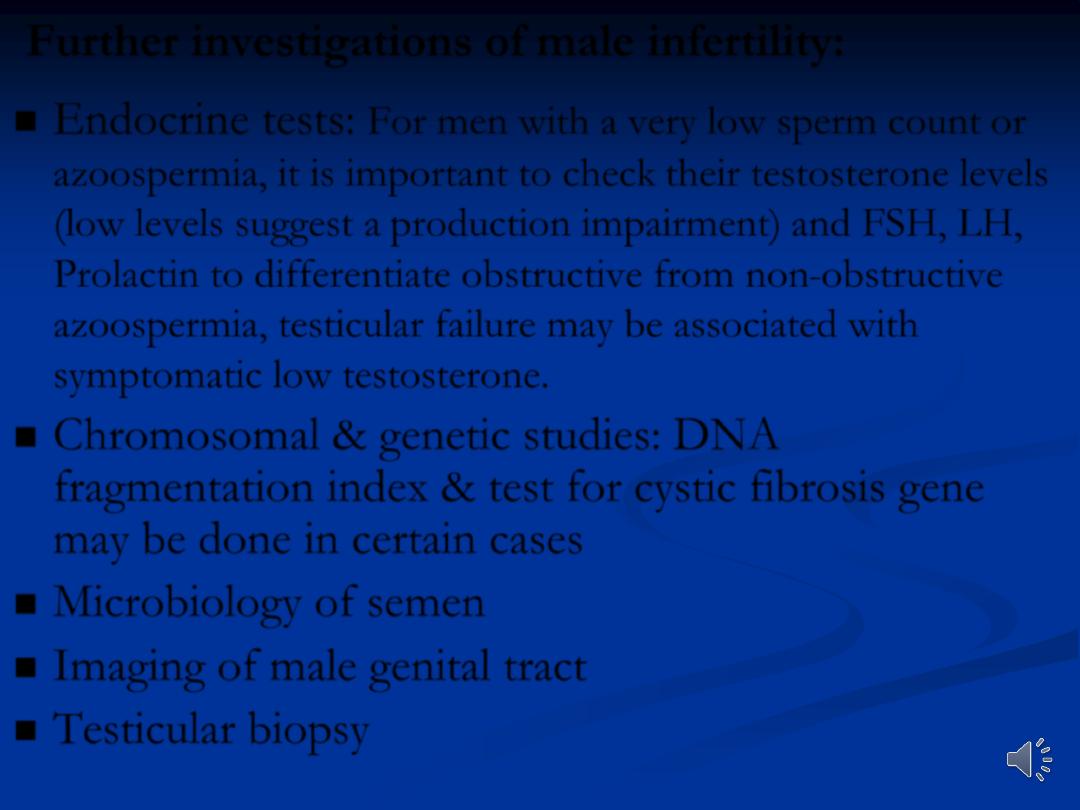
Further investigations of male infertility:
Endocrine tests:
For men with a very low sperm count or
azoospermia, it is important to check their testosterone levels
(low levels suggest a production impairment) and FSH, LH,
Prolactin to differentiate obstructive from non-obstructive
azoospermia, testicular failure may be associated with
symptomatic low testosterone.
Chromosomal & genetic studies: DNA
fragmentation index & test for cystic fibrosis gene
may be done in certain cases
Microbiology of semen
Imaging of male genital tract
Testicular biopsy
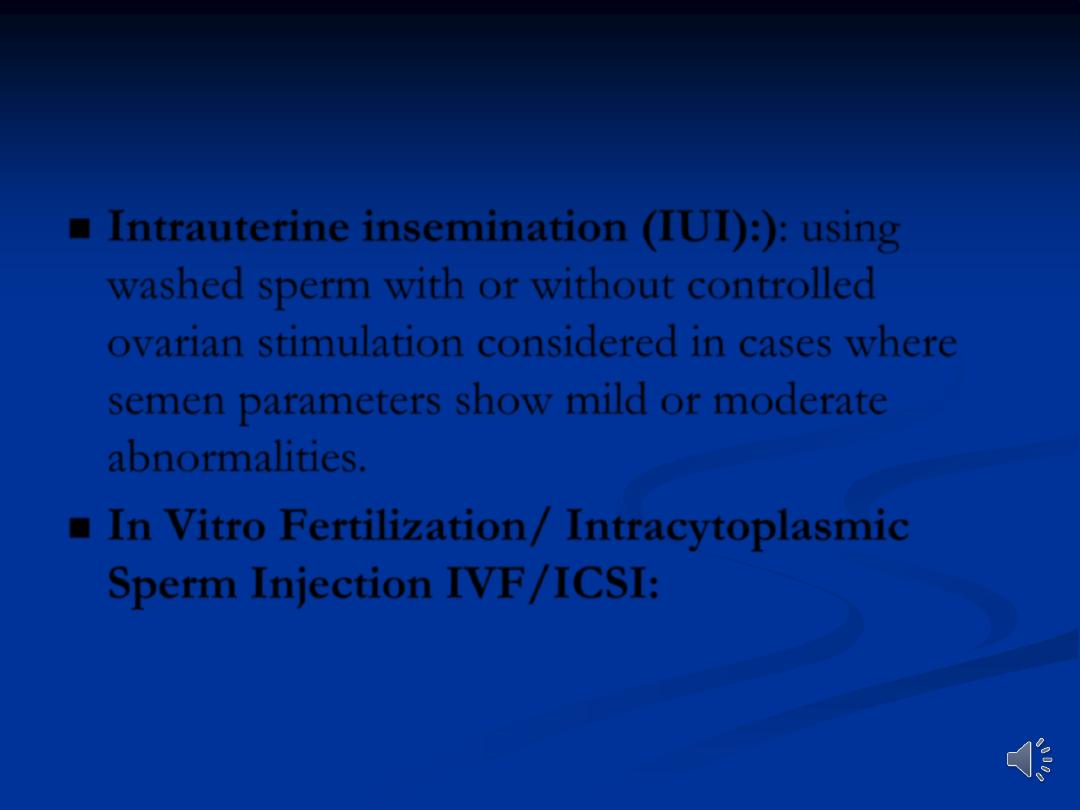
Intrauterine insemination (IUI):): using
washed sperm with or without controlled
ovarian stimulation considered in cases where
semen parameters show mild or moderate
abnormalities.
In Vitro Fertilization/ Intracytoplasmic
Sperm Injection IVF/ICSI: Where semen
parameters are poor, it may be appropriate to
consider IVF treatment straightaway
Management of male factor infertility
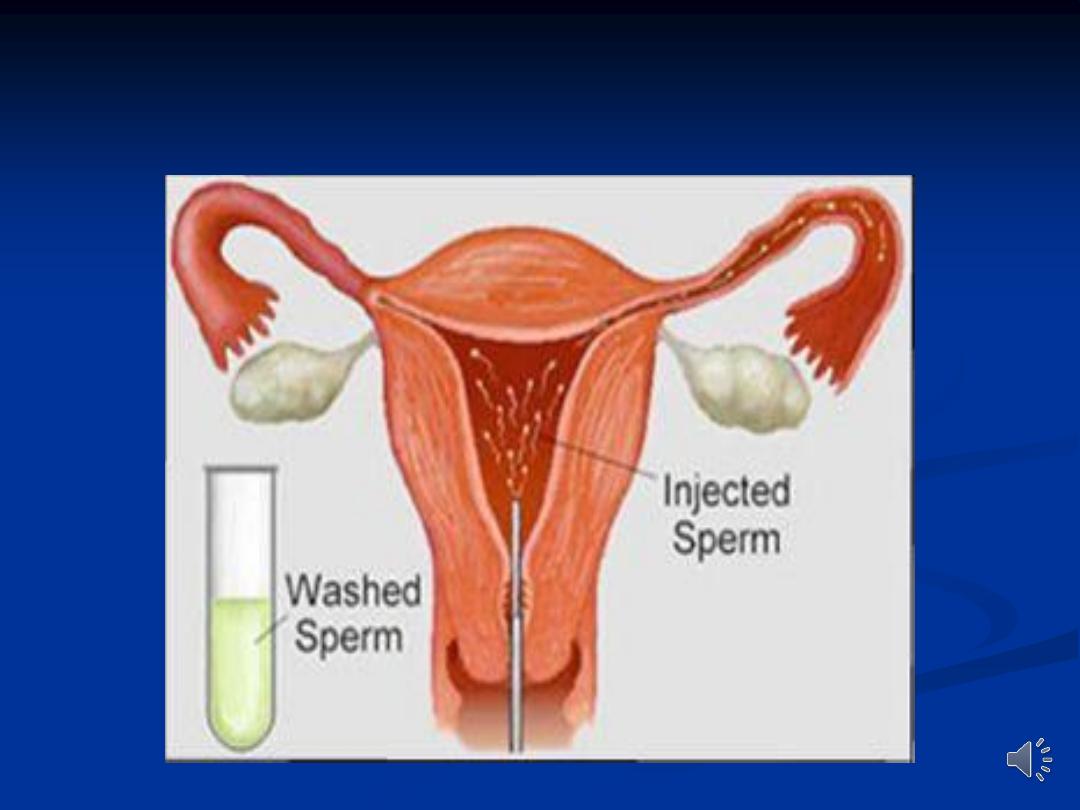
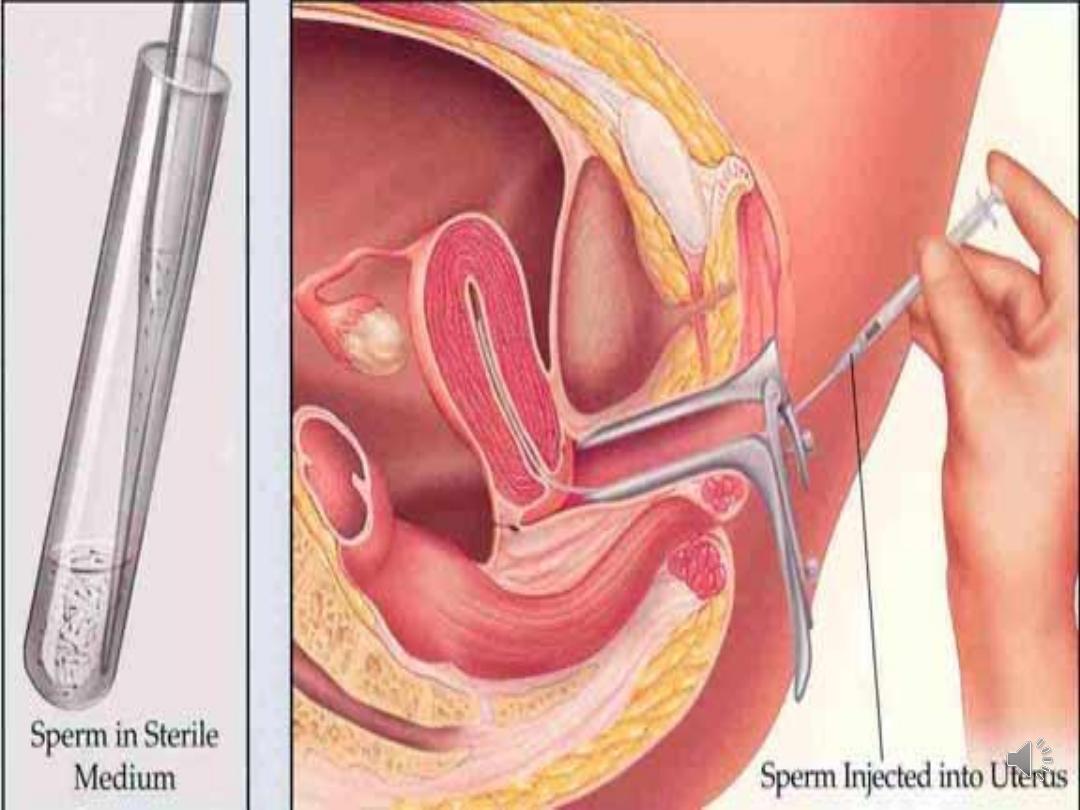
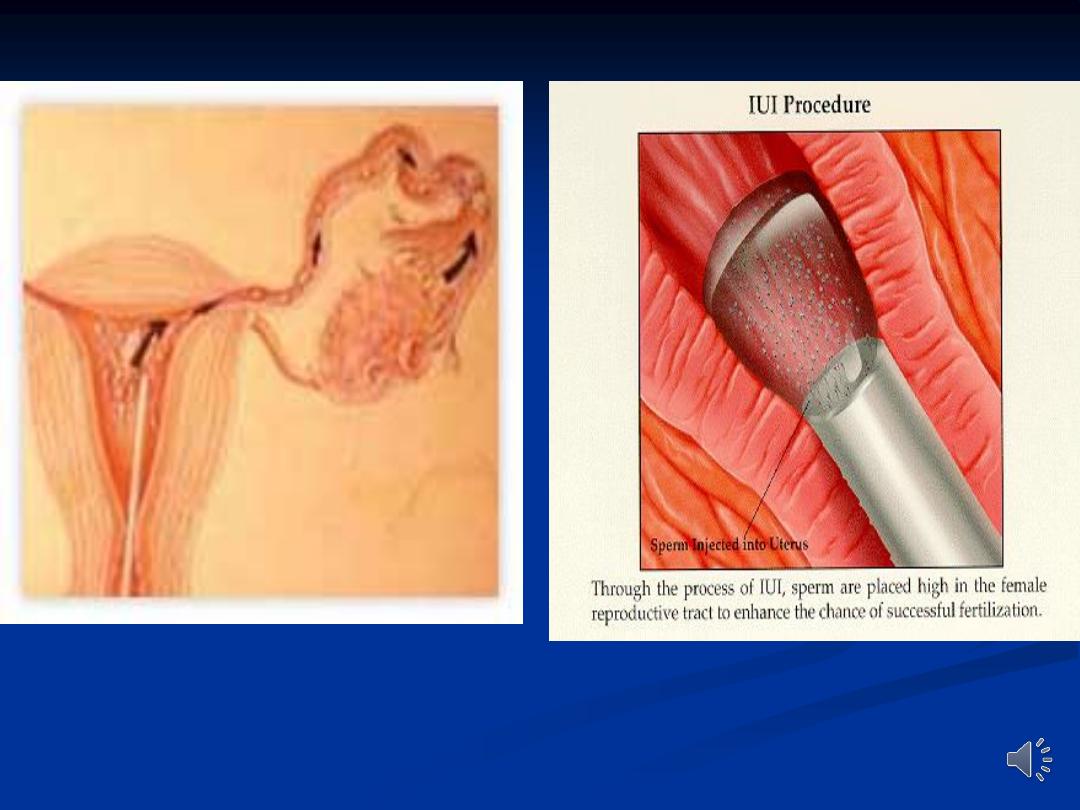

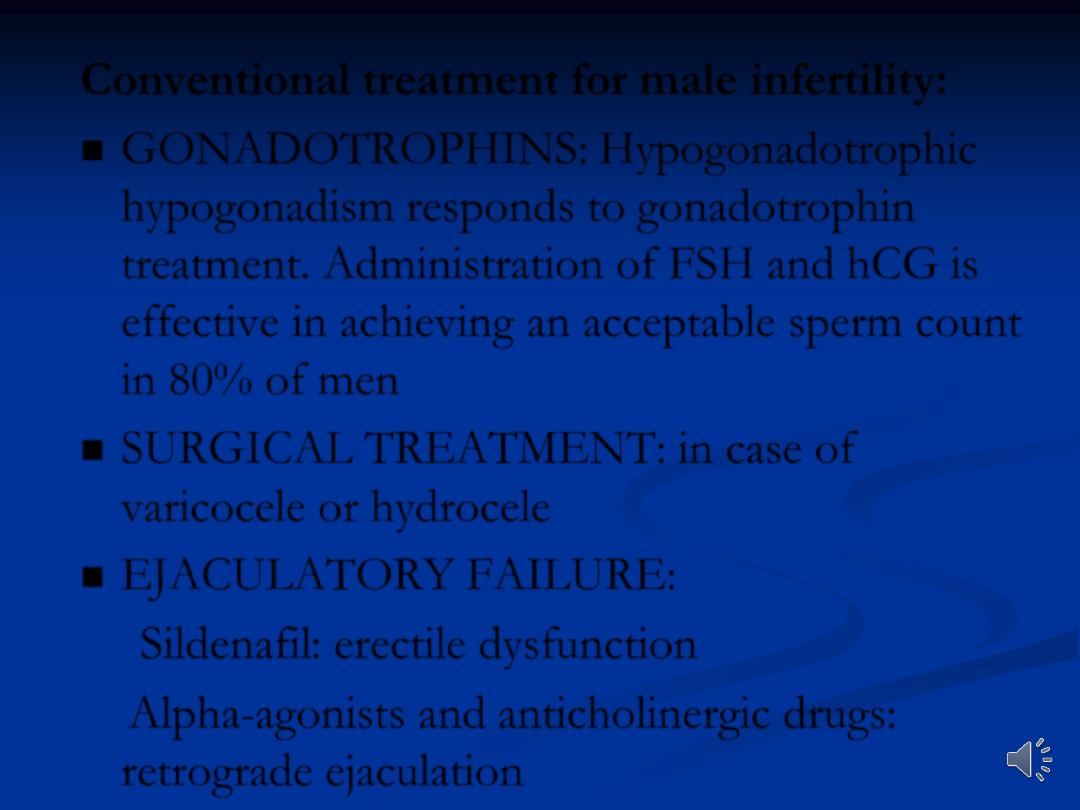
Conventional treatment for male infertility:
GONADOTROPHINS: Hypogonadotrophic
hypogonadism responds to gonadotrophin
treatment. Administration of FSH and hCG is
effective in achieving an acceptable sperm count
in 80% of men
SURGICAL TREATMENT: in case of
varicocele or hydrocele
EJACULATORY FAILURE:
Sildenafil: erectile dysfunction
Alpha-agonists and anticholinergic drugs:
retrograde ejaculation
